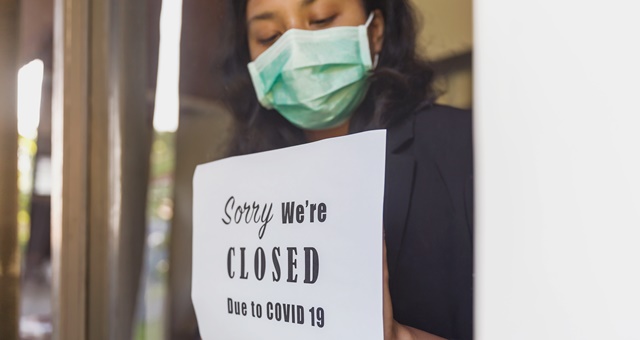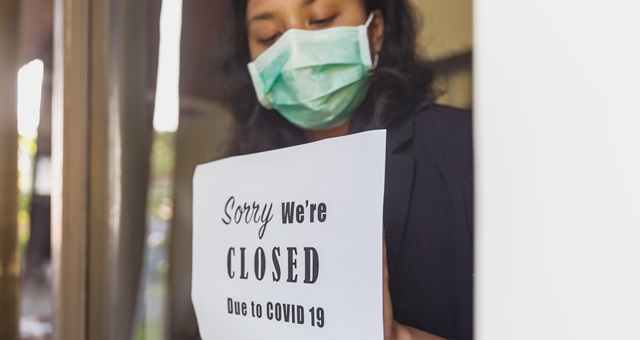
By Larina Maira Laube, Vani van Nielen, Eliana Levine, Mingze Li, Zhaoyu Zhu, Paloma Guerra and Alex Sogno.
During this disruptive time, most hoteliers and F&B managers agree on one thing – a not-so ‘business as usual’ future will follow the current changes. We know that as the hospitality industry begins recovering from COVID-19, there will be many new challenges ahead. But what can you do with F&B outlets now, to come out of this crisis stronger and better prepared for these future changes? Together with industry experts, we compiled best practices for providing reassurance for customers and employees during the closure of your F&B outlets. Furthermore, we’ll offer you some suggestions on how to build up relationships with your suppliers, and profit from the current situation.
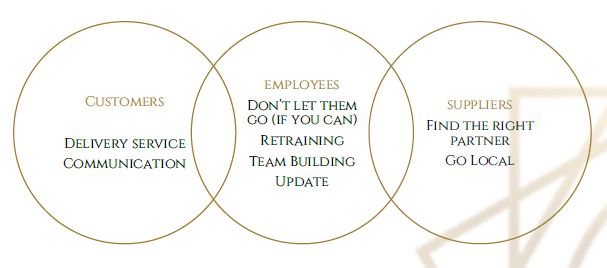
1. Customers
Delivery Options
Implementing a multi-channel sales strategy for your F&B operations is not only crucial today but will continue to be relevant in the future. The South Korean food delivery
platforms Baemin and Yogiyo have reported increased revenues, up by 9% and 11%, respectively, as of March compared to the previous month. In the same manner, the app Deliveroo is gaining benefits from the pandemic. In Hong Kong, for example, orders increased 100% from January to March. Therefore, is reasonable to suggest that hotel F&B outlets which offer off-premise services now, whether that is delivery, catering, or pickup, are likely to rebound faster in the aftermath of COVID-19. Consumers have always searched for convenient and high-quality options.
While a lock-down is enforced in most countries, many consumers, as well as businesses, are considering delivery options. However, there are a few key aspects to keep in mind to reassure your customers:
Menu planning: is the food you offer now suited for delivery, or will the type of food you serve arrive soggy and subpar? Take the time that you have now to redesign your menus to offer ‘transport friendly’ options. This will make your outlet more competitive, not only during the crisis but especially afterwards. Research suggests that while many customers will celebrate the end of lock-down and return to restaurants, many will be cautious and wait for some time before returning to regular dining-out routines.
Your future customer: Concerning delivery, operators will be judged on the speed of service and the quality of the final product. Additionally, the consumer will now pay more attention
to the sanitation of such deliveries. You need to ask yourself how you can guarantee that the boxes and packaging used to deliver your food are 100% sanitised and virus free. Therefore, if you choose to continue operating on a delivery level, you may need to establish packaging methods that are different from what you have used in the past. Experts suggest completely automatised packaging methods, to avoid any risk of contamination by employees. Why not consider a sanitising tunnel after the food is packed or double packaging so the consumer can quickly dispose of the outer layer? These sanitising opportunities may well become the new norm and be included in HACCP (Hazard analysis and critical control points) manuals after the pandemic.
Communication is Key! Whether you operate for delivery only or you are closed altogether, you need to tell customers that you are closed for dining-in for the foreseeable future.
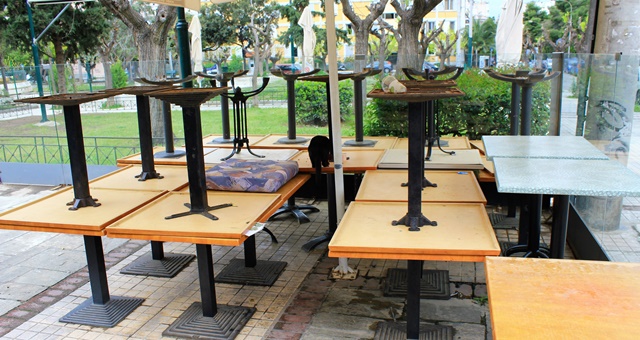
Cleaning procedures: If you decide on a delivery strategy, reflect on the question: how do customers know they can trust the sanitation of your food? Make sure to indicate the measures
taken to ensure the safety of the food you serve.
Communication channels: Consider diversifying your communication channels. For example, add social media channels instead of only using newsletters to inform your clientele. The information you provide should refer to trusted sources recognised by the WHO. In terms of what you communicate – be creative and surprise people. Avoid common messages like ‘during these hard COVID-19 times….’ Instead, be reassuring and demonstrate positivity.
Feedback: Your customers know best what they need to be reassured about what the situation in your restaurant looks like. So, talk to them and find the best actions to take in order to
improve their experience and life. You can do this through your loyalty program app or a consumer engagement platform such as life stories on Instagram, WeChat ads, etc.
Get Creative: Some restaurants have already started offering virtual cooking classes, family-sized menus that can be refrozen at home, or have even established a wine and cheese hotline
so guests can find the best pairings at home. Now it’s your turn. What can you do to make your offering more creative? Maybe you could even send a delivery of a signature ingredient associated with your cuisine that will remind your customers of you each time they use it.
Reopening: Following the actions above, plan for a memorable reopening. Consider simplifying your dine-in menu, as some supply may not be available. Work on your room service menu, as some guests may want to avoid the busy restaurants in the beginning. Also, re-think the buffet at your hotel in terms of hygiene and cost reasons. Finally, invite your regulars and press to remind everybody you are there alive, kicking, and ready to turn over a new leaf. This is the ideal time to build relationships. Use it wisely.
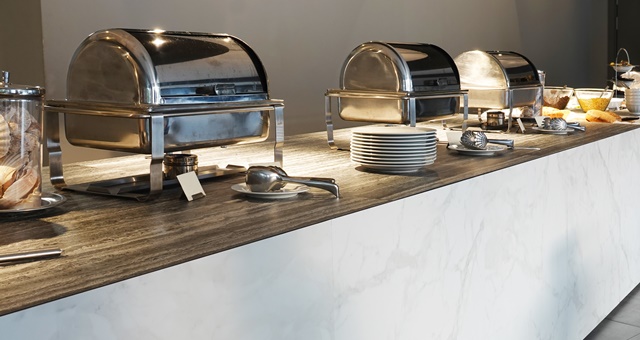
2. Employees
Don’t let them go (if you can): The worst you can do is to let go of your entire team and start recruiting and training from zero. You would not have just suffered a lack of revenue during the
closure, but you will encounter difficulties from the lack of training and professionalism of your new team once you reopen. Many hotel and restaurant employers use strict ‘hours worked’ measurements to determine whether employees maintain full-time status to determine benefits eligibility, such as annual leave. Consider relaxing those standards for this period so that typically classified full-time employees do not suffer a loss of benefits.
Retraining: Instead, consider options to retrain and cross-train your staff. Lead mandatory virtual classes. Topics may include new sanitation procedures or even courses on wine tastings and time management. The possibilities are endless and quickly tailored to your needs.
Team Building: With the impact of the quarantine, building up your team will be necessary. Keeping your staff motivated will be very important if you want a fast and steady ramp-up. With other businesses facing similar challenges, you could, for example, consider generating more meeting rooms revenues by creating packages with external consultants to offer motivation courses for
companies. Furthermore, you can use platforms, such as Workplace, for weekly meetings to update the team based on the latest government news and how they affect the business as well as the reopening plan. Your team reads and watches news to reassure themselves in these uncertain times. Put yourself in your their shoes and be responsive for any questions they might have.
Update! Now is the time to do everything that has been postponed so many times: Look at the operation manuals, policies, and procedures. Refresh the websites and pump up social media presence. Take new pictures and revive the menu design. For the administrative work, consider renewing your templates. Most importantly – communicate those changes to both staff and customers to show them you are proactively reacting to this situation.

3. Suppliers
Find the right partner: Now is an excellent opportunity to establish relationships with the suppliers. Make sure to be informed about what they are doing during these challenging times. You
may even consider building new partnerships to avoid being slowed down at the recovery stage. Some suppliers, like ‘Avantcha Tea’ are reacting more proactively than others by sending samples and offering virtual courses to your employees.
Go Local: With many borders closed, now is the time to consider switching to local suppliers. Pay attention to new trends that are emerging from the current situation. Namely, that people increasingly pay attention to the locality of the food they eat at restaurants. Be sure to remember this and adapt your supply chain accordingly.
It is out of the question that even though COVID-19 is still in full swing, the industry will bounce back eventually. What we are returning to, however, will be a drastically different environment for your customers and employees. Those who are proactively taking action today, while keeping these changes in mind will be able to go through the ramp-up quicker and more successfully.
A special thank you to Thomas Klein International Owner, Daniel During, for his expertise on the subject.
This article was provided by Global Asset Solutions and republished with permission. To read the source version, including source references, please CLICK HERE.

